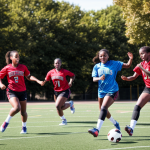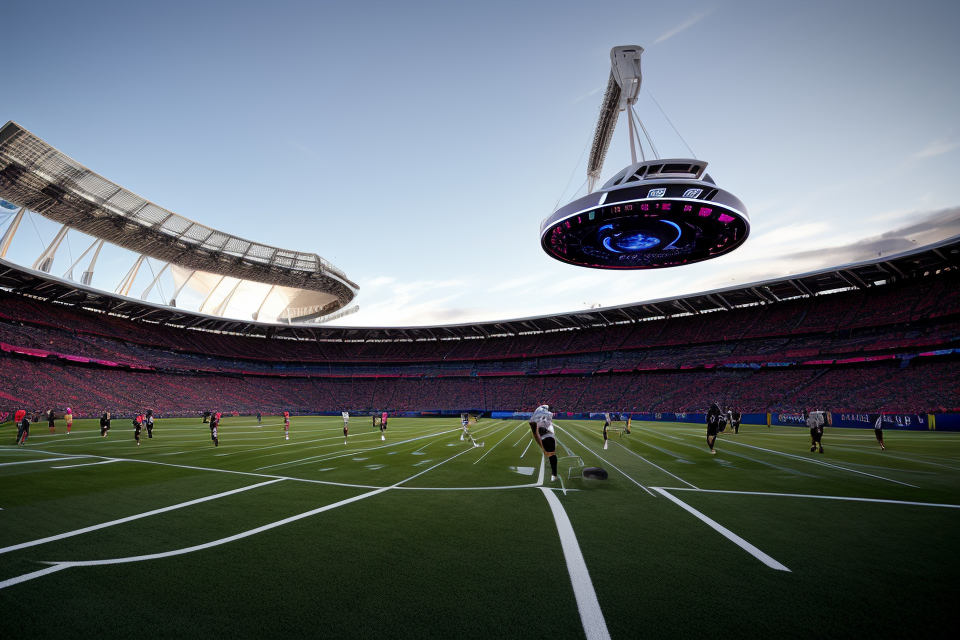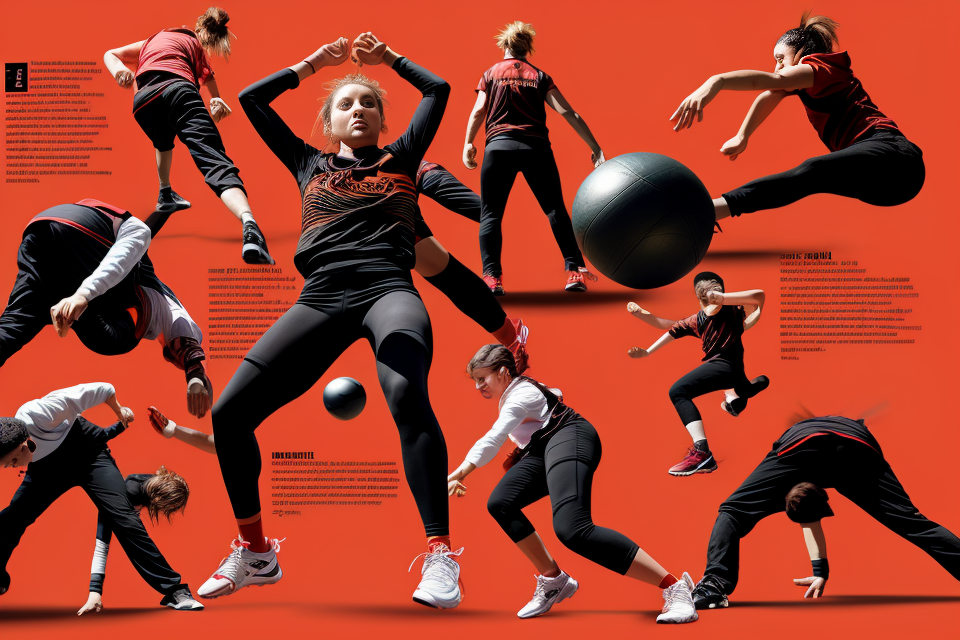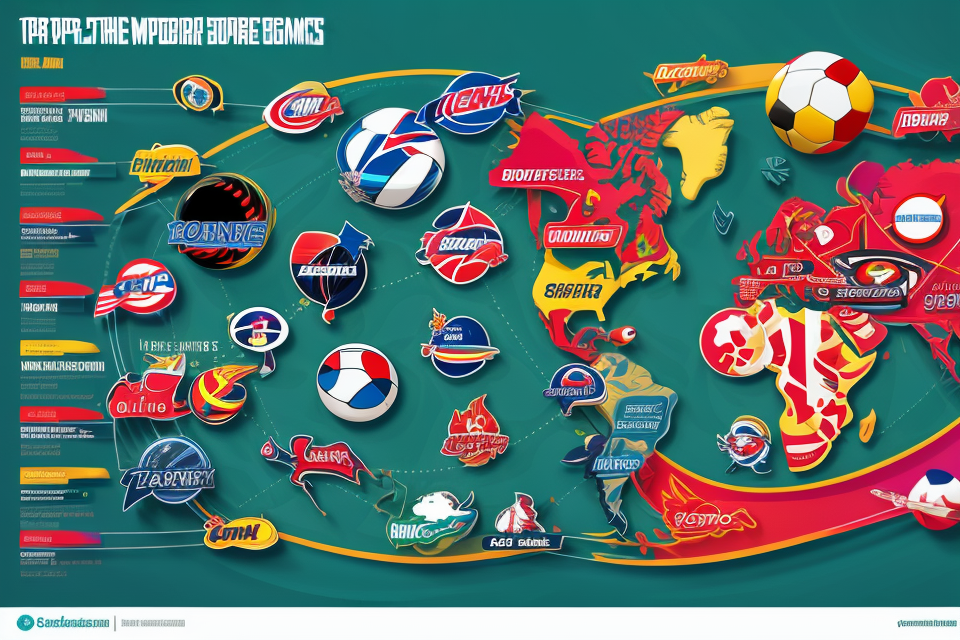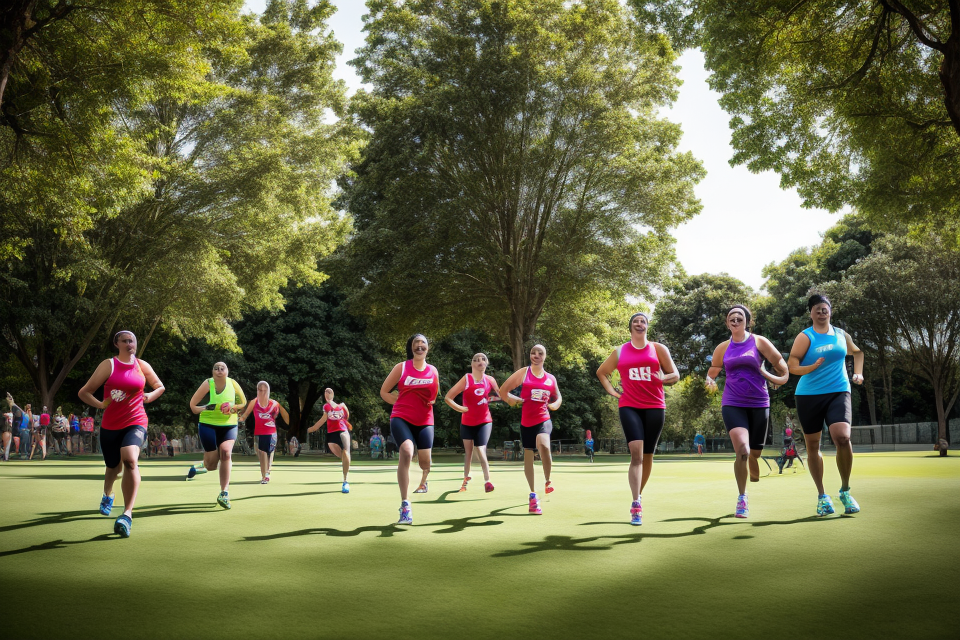As we step into the future, it’s fascinating to imagine what sports will look like in the next decade. With rapid advancements in technology and a growing emphasis on health and wellness, the sporting landscape is set to undergo a dramatic transformation. In this article, we’ll take a closer look at the future of sports and explore how emerging trends and innovations will shape the way we play, watch, and engage with sports in 2033. Get ready to be transported to a world where sports and technology converge to create an exhilarating new experience for athletes and fans alike.
Technological Advancements in Sports
Artificial Intelligence and Analytics
Artificial Intelligence (AI) and analytics have the potential to revolutionize the way sports are played and watched. AI can assist in scouting and player development by analyzing vast amounts of data to identify patterns and trends that may not be apparent to human analysts. This can help teams make more informed decisions on player recruitment, training, and tactics.
Moreover, AI can also enhance the fan experience by providing real-time insights and predictions during games. For instance, AI-powered virtual reality (VR) technology can give fans a more immersive viewing experience, allowing them to see the game from different angles and perspectives. This can provide a more engaging and interactive experience for fans, who can feel like they are part of the action.
Another potential application of AI in sports is in predicting game outcomes and player performance. By analyzing data on player performance, injury history, and other factors, AI algorithms can make predictions about the likelihood of a team winning a game or a player scoring a goal. This can provide valuable insights for coaches, players, and fans alike, and can help teams make strategic decisions on the field.
Overall, the integration of AI and analytics in sports has the potential to transform the sporting landscape in the coming years. By providing more accurate predictions, enhancing the fan experience, and assisting in player development, AI has the potential to bring new levels of excitement and engagement to the world of sports.
Biotechnology and Genetic Engineering
In the near future, biotechnology and genetic engineering are expected to play a significant role in enhancing athletic performance. These technologies hold the potential to revolutionize the sports industry by creating athletes with genetically optimized physical abilities.
Genetic Enhancement and Performance Optimization
Genetic enhancement involves the use of genetic engineering techniques to modify an individual’s DNA in order to improve their athletic performance. This can include altering genes associated with muscle growth, endurance, and recovery time. Additionally, genetic testing can be used to identify genetic predispositions to injuries, allowing athletes and coaches to develop personalized training programs to prevent these injuries.
Ethical Considerations and Regulations
The use of genetic engineering in sports raises a number of ethical concerns. Some argue that genetic enhancement gives athletes an unfair advantage, while others believe that it is simply a tool for improving performance. Regardless of one’s stance on the issue, it is clear that the use of genetic engineering in sports will require careful regulation to ensure fairness and safety.
International sports organizations, such as the International Olympic Committee (IOC), have already begun to address the issue of genetic engineering in sports. The IOC has established a commission to explore the ethical and scientific implications of genetic manipulation in sports, and has called for a global conversation on the topic.
As genetic engineering technology continues to advance, it will be important for sports organizations to establish clear guidelines and regulations to govern its use in sports. This will involve striking a balance between allowing athletes to use genetic engineering to improve their performance, while ensuring that the playing field remains level and fair for all competitors.
Robotics and Automation
As technology continues to advance at an exponential rate, it is likely that robotics and automation will play a significant role in the future of sports. Some of the ways in which robotics and automation may be utilized in sports include:
- Autonomous coaching and training tools: Robots and AI-powered systems may be used to provide personalized coaching and training to athletes, using data and analytics to optimize training programs and identify areas for improvement. These tools may also be used to provide real-time feedback to athletes during competition, helping them to make adjustments and improve their performance.
- Injury prevention and rehabilitation devices: Robotics and automation may be used to develop devices that can help prevent injuries by identifying and correcting imbalances and weaknesses in an athlete’s body. These devices may also be used to assist in the rehabilitation process, providing targeted therapy and exercise to help athletes recover from injuries and return to competition.
Overall, the use of robotics and automation in sports has the potential to revolutionize the way athletes train and compete, providing new tools and technologies that can help them achieve their goals and stay ahead of the competition. However, it is important to consider the ethical implications of these technologies, and to ensure that they are used in a responsible and equitable manner.
Shifting Demographics and Participation Trends
Diversity and Inclusion
As the world continues to evolve, the sporting landscape is also expected to undergo significant changes in terms of diversity and inclusion. In the next decade, there will be a greater emphasis on promoting equal opportunities for women and minorities in sports, as well as fostering a more inclusive and diverse sports culture.
- Increased representation of women and minorities in sports
One of the most notable changes in the sporting landscape will be the increased representation of women and minorities in sports. This will be achieved through various initiatives such as targeted recruitment campaigns, mentorship programs, and scholarships. These initiatives will aim to create a more diverse and inclusive environment in sports, where everyone has an equal opportunity to participate and succeed.
- Fostering a more inclusive and diverse sports culture
In addition to increased representation, there will also be a greater focus on fostering a more inclusive and diverse sports culture. This will involve promoting awareness and understanding of different cultures and backgrounds, as well as addressing issues such as discrimination and bias. By creating a more inclusive environment, sports will be able to better reflect the diverse society in which we live, and provide a platform for individuals from all backgrounds to come together and celebrate their shared love of sport.
Changing Demographics
The global population is projected to reach almost 9.7 billion by 2033, with the majority of this growth occurring in developing countries. This increasing population size, coupled with urbanization and globalization, will have a significant impact on the world of sports.
- The impact of globalization on sports
Globalization has played a major role in shaping the world of sports, as it has facilitated the spread of sports from their traditional homelands to other parts of the world. As a result, many sports have become popular in countries where they were previously unknown. This has led to an increase in the number of sports events, competitions, and leagues, as well as the creation of new sports that combine elements from different cultures.
Furthermore, globalization has enabled athletes from different countries to compete against each other at an international level, leading to the emergence of new sports heroes and role models. This has helped to break down cultural barriers and promote understanding and respect between people from different backgrounds.
- Adapting to a more diverse and multicultural sports landscape
As the world becomes more diverse and multicultural, sports organizations will need to adapt to these changes in order to remain relevant and competitive. This may involve changing the way they market their sports, as well as the types of sports they offer, in order to appeal to a wider range of people.
Additionally, sports organizations will need to address issues related to diversity and inclusion, such as the underrepresentation of certain groups in sports and the need for more culturally sensitive coaching and refereeing. By taking a proactive approach to these issues, sports organizations can help to ensure that their sports remain inclusive and accessible to everyone, regardless of their background or culture.
Aging Population and Health Concerns
As the global population continues to age, the sporting landscape must adapt to accommodate this demographic shift. By 2033, it is projected that approximately 20% of the global population will be aged 60 or above, which will significantly impact the world of sports. To address the challenges posed by an aging population, the sports industry must take proactive measures to promote physical activity and healthy lifestyles for all ages.
- Incorporating age-friendly sports: With the growing number of older adults, there will be a greater demand for sports that cater to their physical abilities and limitations. The sports industry must develop age-friendly sports and modifications to existing sports to ensure inclusivity and accessibility for all ages. For instance, adaptive sports for individuals with disabilities, or sports with modified rules to accommodate older athletes, will become increasingly important.
- Promoting physical activity: Regular physical activity is crucial for maintaining good health and well-being, especially as people age. The sports industry must focus on promoting physical activity as a key component of a healthy lifestyle. This can be achieved through initiatives such as community-based sports programs, accessible sports facilities, and targeted marketing campaigns to encourage older adults to engage in sports and physical activity.
- Emphasizing health and wellness: The sports industry must also shift its focus towards promoting health and wellness, rather than just competition and winning. This means emphasizing the importance of physical activity for overall health, rather than just athletic performance. By promoting a holistic approach to sports, the industry can better serve the needs of an aging population and encourage lifelong participation in sports and physical activity.
Overall, the sports industry must adapt to the changing demographics and health concerns of an aging population. By incorporating age-friendly sports, promoting physical activity, and emphasizing health and wellness, the industry can ensure that sports remain accessible and inclusive for all ages.
The Future of Major Professional Sports
Evolution of Traditional Sports
- Integration of Virtual Reality and Augmented Reality in Training and Fan Experience
- Virtual Reality (VR) and Augmented Reality (AR) technologies have the potential to revolutionize the way athletes train and fans experience sports. These technologies can create immersive and realistic environments for athletes to practice and hone their skills, as well as for fans to feel like they are part of the action.
- In the near future, we can expect to see professional sports leagues incorporating VR and AR technologies into their training and scouting processes. This will allow teams to create highly realistic simulations of games and practices, which can help players improve their decision-making and strategic skills.
- Furthermore, VR and AR technologies can enhance the fan experience by providing new and innovative ways to watch games. For example, fans can put on VR headsets and feel like they are sitting on the field or in the stands, interacting with players and other fans in real-time.
- Focus on Sustainability and Social Responsibility
- As society becomes more conscious of environmental and social issues, professional sports leagues and teams will need to adapt and prioritize sustainability and social responsibility. This could include implementing greener practices, such as using renewable energy sources and reducing waste, as well as promoting diversity and inclusion in hiring and team management.
- Additionally, professional sports leagues and teams will need to address issues of player safety and well-being. This may involve implementing stricter rules and regulations to prevent injuries, as well as providing better support and resources for players both during and after their careers.
- By embracing sustainability and social responsibility, professional sports leagues and teams can not only improve their public image but also make a positive impact on society as a whole.
Emergence of New Sports and Leagues
As the world continues to evolve, so too will the sports landscape. In 2033, we can expect to see the emergence of new sports and leagues that cater to changing interests and technological advancements.
The rise of esports and gaming competitions
Esports and gaming competitions have been rapidly gaining popularity in recent years, and this trend is expected to continue into the future. With the rise of online gaming and the increasing availability of high-speed internet, esports has become a viable career path for many young athletes. In 2033, we can expect to see the continued growth of esports leagues and competitions, with major brands and investors jumping on board to capitalize on this burgeoning industry.
The growth of new sports and leagues catering to changing interests
As society becomes more diverse and multicultural, the sports landscape will reflect these changes. In 2033, we can expect to see the emergence of new sports and leagues that cater to a wide range of interests and communities. For example, we may see the growth of sports that are specifically designed for people with disabilities, or sports that are more inclusive of different ethnic and cultural backgrounds. Additionally, new technologies such as virtual reality and augmented reality may lead to the creation of entirely new sports and competitions.
Another factor that will influence the emergence of new sports and leagues is the increasing awareness of environmental issues. In 2033, we can expect to see the growth of sports and leagues that promote sustainability and environmental stewardship, such as eco-friendly racing and outdoor adventure sports.
Overall, the future of sports is likely to be characterized by a diverse and dynamic landscape that reflects the changing interests and values of society. As new technologies and social trends emerge, we can expect to see the creation of new sports and leagues that capture the imagination of fans and athletes alike.
Globalization and the International Sports Landscape
- The increasing importance of international competitions and events
- The rise of global tournaments and leagues
- The growth of the UEFA Champions League and its impact on club football
- The expansion of the International Cricket Council’s World Test Championship
- The emergence of the Basketball Africa League and its role in the development of the sport on the continent
- The role of technology in enhancing international competitions
- The use of video assistant referees (VAR) in major tournaments
- The integration of advanced analytics in player performance and team strategy
- The growing influence of social media and digital platforms on international sports
- The impact of live streaming and online engagement on fan culture and participation
- The role of social media in shaping athlete branding and endorsement deals
- The rise of global tournaments and leagues
- The role of sports in diplomacy and global relations
- The use of sports as a tool for promoting peace and reconciliation
- The role of the Olympic Games in fostering diplomatic relations between nations
- The potential for sports to facilitate dialogue and cooperation in regional conflicts
- The growing importance of sports business and investment in global relations
- The role of sports in economic development and job creation
- The increasing significance of sports diplomacy in trade negotiations and international partnerships
- The potential challenges and opportunities of global sports governance
- The need for transparent and accountable decision-making in international sports organizations
- The role of emerging sports powerhouses in shaping the future of global sports governance
- The use of sports as a tool for promoting peace and reconciliation
FAQs
1. How will technology impact the future of sports?
Technology is expected to play a significant role in shaping the future of sports. Advancements in areas such as virtual reality, augmented reality, and artificial intelligence are likely to transform the way sports are played, watched, and experienced. For example, virtual reality may be used to create immersive training environments for athletes, while artificial intelligence could be used to analyze player performance and provide personalized coaching.
2. Will traditional sports still be popular in the future?
Yes, traditional sports such as football, basketball, and soccer are likely to remain popular in the future. However, we can expect to see changes in the way these sports are played and watched, driven by technological advancements and changing consumer preferences. For example, we may see the emergence of new rules and formats for these sports, as well as the development of new sports leagues and competitions.
3. How will climate change impact the future of sports?
Climate change is likely to have a significant impact on the future of sports. Rising temperatures and changing weather patterns may affect the scheduling and conduct of outdoor sports, while the increased frequency and severity of natural disasters may disrupt sporting events and infrastructure. As a result, we can expect to see more sports being played indoors or in controlled environments, as well as the development of new technologies to help athletes and spectators cope with extreme weather conditions.
4. Will there be new sports in the future?
Yes, we can expect to see the emergence of new sports in the future, driven by changing societal trends and technological advancements. For example, sports that involve virtual or augmented reality technology may become more popular, as well as sports that focus on sustainability and environmental awareness. Additionally, we may see the development of new sports that incorporate elements from multiple existing sports, or that are designed to be played in new environments such as space or underwater.
5. How will the rise of esports impact the future of sports?
The rise of esports, or competitive video gaming, is likely to have a significant impact on the future of sports. Esports has already gained a large following and is expected to continue to grow in popularity, particularly among younger audiences. This may lead to more collaboration and integration between traditional sports and esports, as well as the development of new sports that combine elements of both. Additionally, we can expect to see more investment in esports infrastructure and technology, as well as the development of new esports leagues and competitions.

